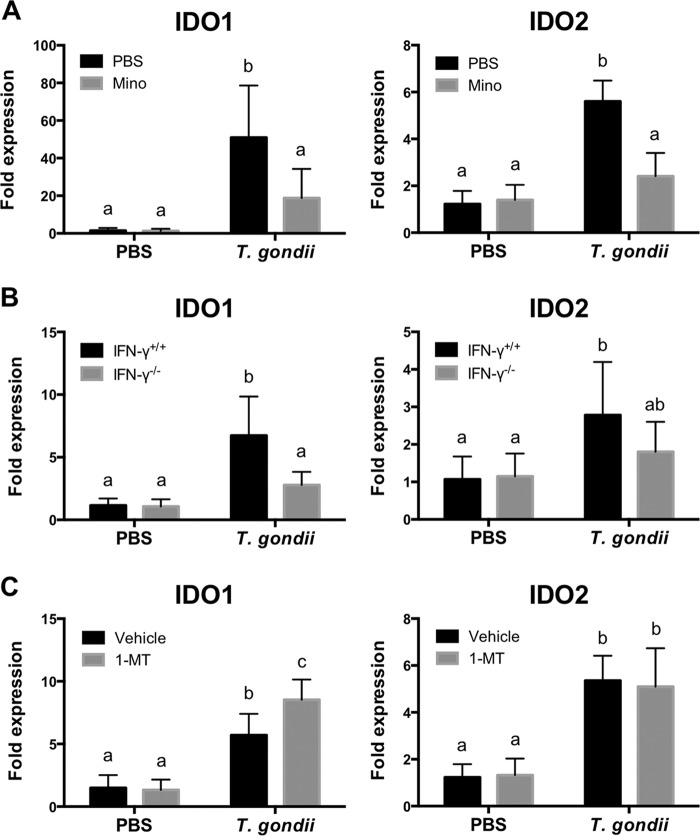FIG 5.
Expression of IDO in brains of mice following T. gondii infection. (A) Expression of IDO1 and IDO2 in brains of wild-type BALB/c mice after injection with PBS or infection with T. gondii at 10 dpi under treatment with Mino (10 mg/kg i.p.) or injection with PBS from days for 4 to 7 postinfection. Data are representative of data from two independent experiments with similar results and are presented as means ± standard deviations [n = 5 or 6 (one mouse died due to infection in the T. gondii-infected and PBS-injected group); for IDO1, F(1, 19) = 6.480 and P = 0.0197; for IDO2, F(1, 19) = 26.09 and P < 0.0001]. (B) Expression of IDO1 and IDO2 in brains of wild-type BALB/c mice (IFN-γ+/+) and IFN-γ−/− mice after injection with PBS or infection with T. gondii at 10 dpi. Data from two independent experiments are summarized and presented as means ± standard deviations [n = 5 plus 5; for IDO1, F(1, 36) = 13.06 and P = 0.0009; for IDO2, F(1, 36) = 3.313 and P = 0.077]. (C) Expression of IDO1 and IDO2 in brains of wild-type BALB/c mice after injection with PBS or infection with T. gondii at 10 dpi under treatment with 1-MT (50 mg/kg subcutaneously) or injection with the vehicle from days 4 to 7 postinfection. Data are representative of data from two independent experiments with similar results and are presented as means ± standard deviations [n = 5 or 6 (one mouse died due to infection in T. gondii-infected and vehicle-injected group); for IDO1, F(1, 19) = 7.313 and P = 0.0141; for IDO2, F(1, 19) = 0.158 and P = 0.6954]. Different letters above bars in the graphs indicate statistically significant differences among the groups by two-way ANOVA plus Tukey-Kramer post hoc analysis.

